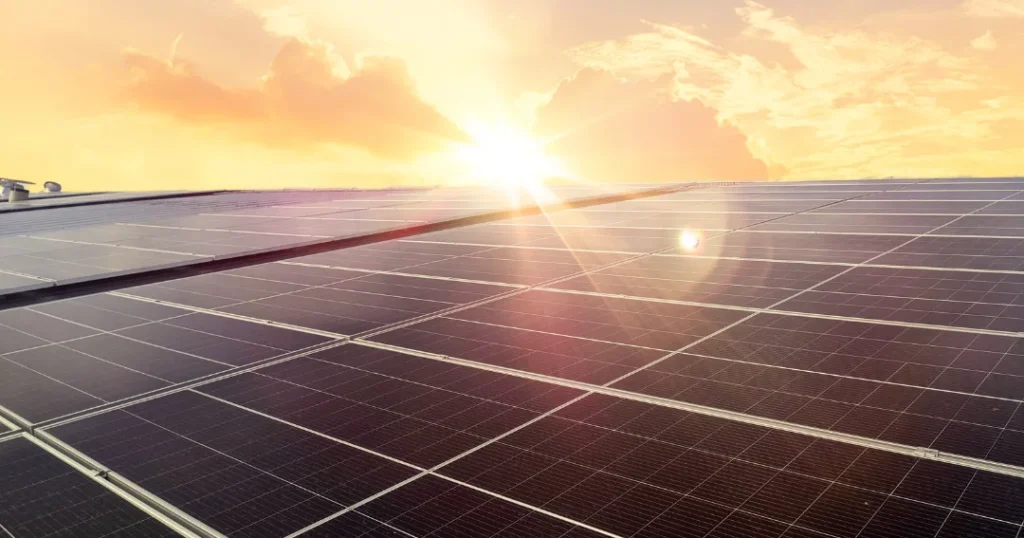Rooftop solar has long been the go-to choice for homeowners and businesses seeking to harness the sun’s energy. For decades, panels installed on roofs offered an effective, relatively simple way to generate clean electricity without altering a building’s core design. But as urban landscapes evolve, a new wave of solar innovation is emerging — integrating solar panels directly into building facades, windows, and other structural elements.

The Evolution from Rooftops to Full Integration
For years, rooftop solar has been the most popular method of harnessing sunlight in residential and commercial spaces. Panels installed on the roof offered a simple and effective way to generate clean power without altering a building’s core structure. However, as urban density increased and aesthetic demands evolved, architects and engineers began exploring ways to move beyond traditional rooftop setups.
Building-Integrated Photovoltaics (BIPV) represent this new wave. Instead of mounting panels as an add-on, BIPV incorporates solar cells into building materials themselves — from glass facades to cladding panels. This means the building is not just hosting solar panels; it becomes the solar panel.
The Benefits of Going Beyond the Roof
While rooftop solar remains a strong choice, integrating solar into facades, windows, and shading systems unlocks several new benefits:
- Maximized Surface Area – In high-rise cities where roof space is limited, facades offer far more square footage for energy capture.
- Improved Aesthetics – Modern BIPV products can mimic traditional building materials, preserving design appeal while producing power.
- Enhanced Energy Output – Facades can capture sunlight during times when rooftops might be shaded, especially in early mornings and late afternoons.
- Durability and Functionality – Solar-integrated materials often double as insulation or weatherproofing, adding extra value beyond power generation.
Technological Innovations Making it Possible
Advances in thin-film solar cells, semi-transparent photovoltaic glass, and flexible solar laminates have been game-changers. For instance, photovoltaic glass can replace regular windows, letting light in while generating electricity. Similarly, solar shingles offer a sleeker, less intrusive alternative to bulky panels, bridging the gap between rooftop solar and fully integrated systems.
Manufacturers are now producing lightweight, high-efficiency modules that can be adapted to curved surfaces or colored to match building exteriors. This flexibility is enabling architects to make sustainability part of the design process rather than an afterthought.
Urban Impact and Sustainability Goals
Cities worldwide are setting ambitious carbon-reduction targets. By shifting from rooftop solar alone to a combination of roof and facade integration, buildings can produce significantly more on-site energy. This helps reduce reliance on grid electricity and lowers transmission losses, since the power is consumed right where it’s generated.
For densely populated areas, where land is scarce and energy demand is high, BIPV could play a crucial role in meeting renewable energy quotas. It also aligns perfectly with net-zero building standards, which require that a structure’s total energy consumption be balanced by renewable production.
Economic Considerations
While BIPV systems can have higher upfront costs than conventional rooftop solar, they may reduce overall construction expenses by replacing traditional materials like glass or stone. Over time, the energy savings and potential tax incentives can offset the investment. Furthermore, as manufacturing scales up and technology matures, prices are expected to drop, making BIPV more accessible to a wider market.
Developers are increasingly recognizing the marketing value of BIPV as well. A building that powers itself — and does so elegantly — stands out in a competitive real estate market.
The Road Ahead
The next decade could see rooftop solar and BIPV working hand-in-hand. Roofs will continue to be prime solar real estate, but facades, canopies, and even balcony railings will join the effort. This layered approach will help cities move closer to energy independence while reshaping skylines into symbols of sustainability.
Government policies, building codes, and incentives will be critical in accelerating adoption. Education for architects, builders, and homeowners will also ensure that these systems are designed and installed effectively for maximum performance.
Conclusion
The shift from exclusive reliance on rooftop solar to the embrace of building-integrated solar marks a pivotal moment in the renewable energy movement. By transforming every surface of a building into a potential power generator, we not only produce more clean energy but also redefine what sustainable architecture looks like. From sleek glass facades that double as power plants to walls clad in energy-producing tiles, the buildings of tomorrow will not just shelter us — they will power our lives.
